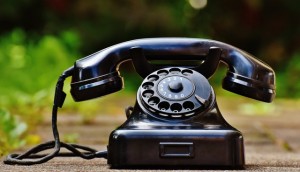 Prior giving to your cause is a key indicator of your donor’s level of engagement, and willingness to support your work. This is one of the factors that weighs heavily into whether your existing donor is a good candidate to actively cultivate for major gifts. Other indicators that someone may be an excellent prospect for recruitment include their accumulation of specific wealth markers, such as real estate, and their level of involvement with other nonprofits, such as whether they have served on the board of directors at other nonprofits, or, if they have made major gifts to other charities.
Prior giving to your cause is a key indicator of your donor’s level of engagement, and willingness to support your work. This is one of the factors that weighs heavily into whether your existing donor is a good candidate to actively cultivate for major gifts. Other indicators that someone may be an excellent prospect for recruitment include their accumulation of specific wealth markers, such as real estate, and their level of involvement with other nonprofits, such as whether they have served on the board of directors at other nonprofits, or, if they have made major gifts to other charities.
Taking steps to recruit major donors is one way to increase the effectiveness of those that give to your NFP, and the programs and projects that they fund for your organisation. The following tips will help you bring your prospect research program into focus so that you can improve your outreach to this segment of your supporters.
Upgrade Your Donor Database
Before you begin researching your prospects, it’s important that you upgrade your donor database and make sure that it can record and track all the information that you will need to research your prospects. Take the time to update your contact information for all your donors during this time as well, along with their communication preferences. This will ensure that your prospects receive your messages via the methods they prefer best.
Record and Track Key Data to Identify Key Prospects
Some metrics you will want to track include the amount and frequency donors have made gifts to your organisation in the past, along with significant gifts they have made at other nonprofits. Try to accumulate and track additional demographic data, such as their marital status, affiliation with specific political parties and other nonprofits, their employment, job title, age, education and similar types of data. Even something seemingly unrelated as a person’s hobbies can tell you a lot about who an individual is as a person and can help you target your communications and outreach to them so that you or someone within your organisation can connect on a deeper level and develop a genuine relationship that will encourage greater engagement with your cause.
Just like your other donors, you will want to keep tabs on which types of emails and other communications these contributors respond to, so you can learn which types of messages work well to encourage engagement with a specific donor, and which miss the mark.
Putting Your Prospect Research to Work
Once you have a reliable way to record and track prospect data and have begun to note markers that indicate a specific supporter might have the capacity to become a major donor, it’s time to put your prospect research to work. Analyse your research to try to pick up on individual donors giving patterns to see if you can discern which types of fundraising campaigns will most appeal to individual prospects. Learn to time your fundraising and messaging outreach to those times of the year that your prospects will be more likely to give.
Have a plan to communicate with your prospects about your nonprofit’s mission, and the work that you are doing, multiple times without “selling” or “asking” for donations. While you will want to ask for the donation as your relationship progresses, most major donors may resist attempts at a hard sell. Cultivating a prospect is like building any other friendship, it takes time, genuine interest in the person as an individual, and a natural give and take, to form a lasting relationship that both of you can count on!
Attend a Training on How to Use Prospect Research Tools to Your NFPs Best Advantage
To learn more about how to use tools to improve your NFP’s prospect research, consider attending this seminar offered by Donor Search: Flash Class: Prospect Research Tools: Getting the Most Bang for Your Buck on Thursday, June 28 2018 at 4:00 AM – 5:00 AM AEST. Attendees will learn about several low cost and free tools that can help you take your prospect research to the next level, and make it easier than ever to segment your donor lists and improve your outreach to increase your donor effectiveness.

 Posted on 21,Jun |
Posted on 21,Jun |
 Posted by Anne
Posted by Anne 




There are no comments yet